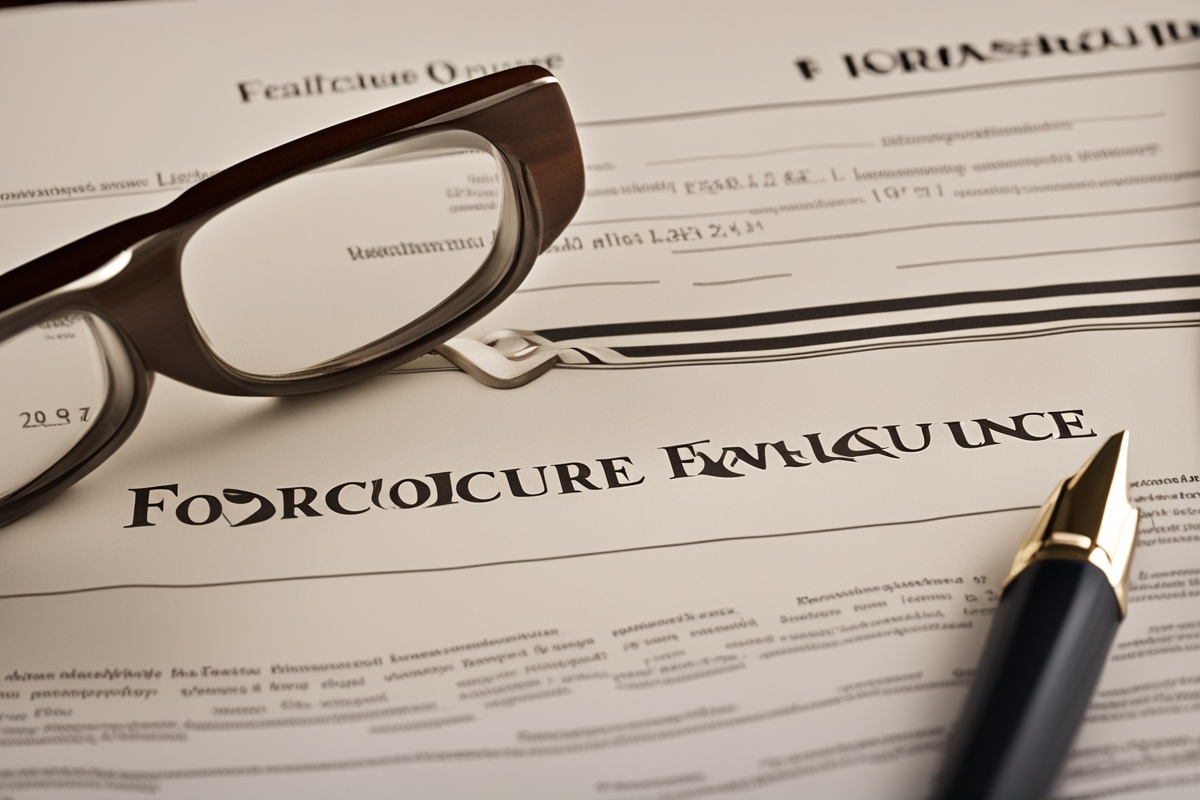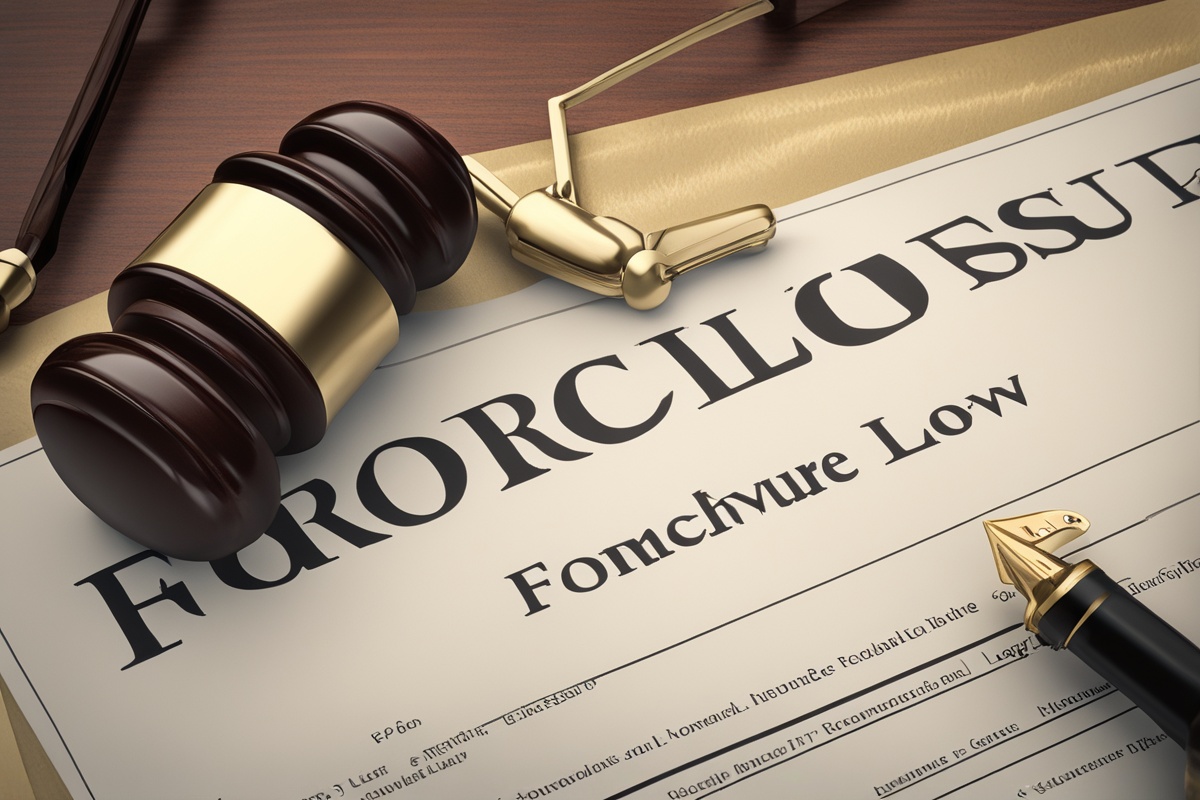Navigating the turbulent waters of foreclosure can feel like an uphill battle. If you’re a homeowner staring down the possibility of losing your property, you’re not alone—millions of Americans have faced this challenge, especially during economic downturns. The good news? There are legal options and strategies that can help you avoid or mitigate the impact of foreclosure. In this detailed foreclosure guide, we’ll walk you through actionable steps, legal avenues, and practical tips to empower you during this difficult time. Whether you’re seeking to stop foreclosure or understand your rights, this post is your roadmap to making informed decisions. Let’s dive into the legal options available and how they can work for you.
Understanding Foreclosure: The Basics You Need to Know
Foreclosure is a legal process where a lender repossesses a property due to the homeowner’s failure to make mortgage payments. It’s a daunting term, but understanding the process is the first step in this foreclosure guide. The timeline and rules vary by state, with some following a judicial process (court involvement) and others using non-judicial methods (trustee-led). Typically, foreclosure begins after several missed payments—often 90 to 120 days—when the lender issues a notice of default (NOD). From there, you might have a window to act before the property is auctioned or sold.
Knowing your state’s laws is critical because they dictate your rights and the timeline you’re working with. For instance, judicial foreclosures, common in states like New York, can take months or even years, giving homeowners more time to explore foreclosure help options (Smith, 2020). On the other hand, non-judicial states like California often move faster. Start by checking your state’s housing department website or consulting a local attorney to understand the specific process. Knowledge is power, and this is where your journey to avoid foreclosure begins.
Legal Option 1: Loan Modification as a Foreclosure Defense
One of the most accessible legal options in our foreclosure guide is a loan modification. This involves negotiating with your lender to change the terms of your mortgage—such as lowering the interest rate, extending the loan term, or reducing the principal balance—to make payments more manageable. Loan modifications are often facilitated through programs like the Home Affordable Modification Program (HAMP), though eligibility criteria apply (HUD, 2021).
The key to success with a loan modification is acting early. Contact your lender as soon as you anticipate financial hardship—don’t wait for a notice of default. Be prepared to provide detailed financial information, including income, expenses, and proof of hardship (like medical bills or job loss documentation). While not guaranteed, a modification can be a lifeline to stop foreclosure without resorting to more drastic measures. Keep in mind, though, that applying for a modification doesn’t automatically halt foreclosure proceedings, so you may need to pair this with other strategies.
Legal Option 2: Filing for Bankruptcy to Delay Foreclosure
If a loan modification isn’t viable, filing for bankruptcy might be a powerful tool in your foreclosure guide arsenal. Bankruptcy, particularly Chapter 13, can temporarily halt foreclosure through an “automatic stay,” giving you time to reorganize your finances and propose a repayment plan (Johnson, 2019). Chapter 13 allows you to catch up on missed mortgage payments over three to five years while keeping your home.
However, bankruptcy isn’t a magic bullet. It has long-term consequences for your credit score and financial future, and not everyone qualifies. Chapter 7, another common bankruptcy type, might liquidate assets to pay debts but doesn’t always protect your home. Consulting a bankruptcy attorney is essential to weigh the pros and cons. Here are some key considerations before filing:
- Assess your overall debt load—bankruptcy addresses more than just mortgage debt.
- Determine if you qualify for Chapter 13 based on income and debt limits.
- Understand that the automatic stay is temporary unless a repayment plan is approved.
- Be aware of legal fees, which can range from $1,500 to $3,000 for bankruptcy filings.
Bankruptcy can buy you time, but it’s a serious decision that requires careful thought and professional guidance as part of your foreclosure help strategy.
Legal Option 3: Challenging the Foreclosure in Court
Another avenue in this foreclosure guide is challenging the foreclosure itself through legal action. If you believe there’s an error in the process—such as improper notice, fraud, or violations of federal or state laws—you may have grounds to contest the foreclosure in court. For example, the Truth in Lending Act (TILA) and the Real Estate Settlement Procedures Act (RESPA) protect homeowners from predatory lending practices, and violations can be a basis for a lawsuit (Brown, 2022).
Common defenses include proving the lender didn’t follow proper notification protocols or questioning the ownership of the mortgage note (a frequent issue during the 2008 housing crisis). However, this option requires legal expertise and can be costly. Hiring an attorney who specializes in foreclosure defense is crucial, as is gathering evidence like loan documents and correspondence with the lender. While not always successful, a legal challenge can delay proceedings and give you time to explore other ways to avoid foreclosure.
Legal Option 4: Short Sale or Deed in Lieu of Foreclosure
If saving your home isn’t feasible, consider alternatives like a short sale or a deed in lieu of foreclosure as part of your foreclosure guide toolkit. A short sale involves selling your home for less than the mortgage balance, with the lender’s approval, to avoid foreclosure. A deed in lieu, on the other hand, means voluntarily transferring ownership of the property to the lender in exchange for debt forgiveness.
Both options have pros and cons. They’re less damaging to your credit than a full foreclosure, but they still impact your score and may result in tax liabilities if the forgiven debt is considered income (IRS, 2021). Here are some tips for pursuing these options:
- Work with a real estate agent experienced in short sales to market the property effectively.
- Obtain written approval from your lender for either a short sale or deed in lieu.
- Negotiate to ensure the lender waives any deficiency balance (remaining debt after the sale).
- Consult a tax advisor to understand potential tax consequences of forgiven debt.
- Document all communications with the lender to avoid misunderstandings.
These alternatives can be a dignified way to exit a dire situation, preserving some financial stability while avoiding the full brunt of foreclosure proceedings.
Seeking Professional Help: Attorneys and Housing Counselors
No foreclosure guide would be complete without emphasizing the importance of professional support. Facing foreclosure alone is overwhelming, and experts like foreclosure attorneys and HUD-approved housing counselors can make a world of difference. Attorneys can help you navigate complex legal options, file paperwork, and represent you in court if needed. Housing counselors, often available at no or low cost, provide guidance on negotiating with lenders and accessing government programs (HUD, 2021).
Start by searching for HUD-approved counselors through the Department of Housing and Urban Development’s website. For legal help, look for attorneys with specific experience in foreclosure defense—many offer free initial consultations. Don’t shy away from asking for foreclosure help; these professionals are trained to assist during crises and can often uncover options you hadn’t considered. Remember, time is of the essence, so reach out as soon as you sense trouble.
Preventive Measures: Staying Ahead of Foreclosure
The best way to use this foreclosure guide is to prevent foreclosure before it starts. If you’re struggling but haven’t yet missed payments, take proactive steps. Communicate with your lender immediately—many are willing to offer forbearance (temporary payment pauses) or other relief if you show good faith. Budgeting ruthlessly, cutting non-essential expenses, and seeking additional income sources can also help bridge financial gaps.
Additionally, educate yourself on state and federal homeowner assistance programs. During the COVID-19 pandemic, for instance, the CARES Act provided foreclosure moratoriums and forbearance options for federally backed loans (CFPB, 2020). While such programs may not always be available, staying informed about current relief efforts can be a game-changer in your efforts to stop foreclosure. Prevention is always easier than reaction, so act early and often.
As we wrap up this comprehensive foreclosure guide, remember that facing foreclosure doesn’t mean you’re out of options. From loan modifications and bankruptcy to legal challenges and short sales, there are multiple paths to explore. The key is to act quickly, seek professional foreclosure help, and stay informed about your rights and resources. Losing a home is a deeply personal and emotional experience, but with the right strategies, you can mitigate the damage and rebuild. Take a deep breath, reach out for support, and tackle this challenge one step at a time—you’ve got this.
References
- Brown, T. (2022). Legal defenses in foreclosure cases: A homeowner’s guide. Real Estate Law Journal, 45(3), 112-125.
- Consumer Financial Protection Bureau (CFPB). (2020). CARES Act foreclosure protections. Retrieved from https://www.consumerfinance.gov
- HUD. (2021). Homeowner assistance programs and counseling services. Retrieved from https://www.hud.gov
- Internal Revenue Service (IRS). (2021). Tax implications of short sales and foreclosures. Retrieved from https://www.irs.gov
- Johnson, R. (2019). Bankruptcy as a foreclosure defense strategy. Journal of Property Law, 18(2), 89-104.
- Smith, L. (2020). State variations in foreclosure timelines and processes. American Housing Review, 12(4), 55-67.





